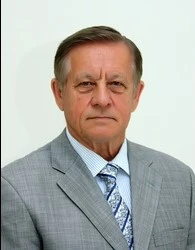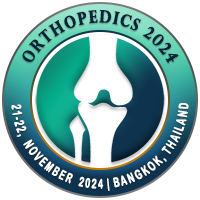
Vladimir I. Shevtsov
Russian Scientific Academy, member AAOS, Chief Researcher of Ural State Medical University, Russian FederationTitle: Long Bone Defects - A Brief History of Development compensation technologies
Abstract
Bone defect is the loss of part of the bone as a result of exposure to congenital or external factors. Purpose of the study. Conduct a retrospective study on the development of technology for the replacement of defects in long bones. Material and research methods. Analysis of the results of treatment of 969 patients with defects of long bones and 213 literature sources on this topic. Different variants of transosseous osteosynthesis according to Ilizarov are described: closed distraction osteosynthesis to restore the length of the segment, bi- and polylocal osteosynthesis to replace a bone defect, restore the integrity and length of the damaged segment, the use of the fibula as an implant.
Indications for the use of distraction osteosynthesis are stiffness hypertrophic psedoarthrosis with a shortening of up to 5 cm. To accomplish this task, osteosynthesis is performed using the Ilizarov apparatus. As a result, the elimination of pseudarthrosis is achieved closed and bloodless, the integrity and length of the damaged bone are restored. Bilocal compression-distraction osteosynthesis is carried out in case of pseudoarthrosis with severe mobility and shortening of the limb segment. Bilocal distraction-compression osteosynthesis is indicated for interfragmentary diastasis.
For large defects (15 cm or more), the technique of polylocal compression-distraction osteosynthesis is used. According to this technique, compression is performed in the area of pseudoarthrosis, and to restore the length of the segment, osteotomy of both fragments for lengthening is performed.
Many authors use fibula grafts, xenografts from spongy titanium, carbon, hydroxylapatite, ceramics, mesenchymal stem cells, protein fractions, and other methods to replace defects.
Results and discussion. The methods used to replace bone defects can be divided into biological and mechanical. Replacement of defects according to Ilizarov, implantation of the fibula are biological. Alloxenografts (spongy titanium, carbon, hydroxyapatite, ceramics) do not have biological properties, they can be used as temporary prostheses. Mesenchymal stem cells and protein fractions act as stimulators of the regenerative process in conjunction with other technologies.
Keywords: bone defect, Ilizarov transosseous osteosynthesis techniques, artificial materials for bone defect replacement
Biography
Shevtsov Vladimir Ivanovich Dr. med. Sciences, Professor, Corresponding Member of the Russian Academy of Sciences. From 1992 to 2009 - General Director of the Russian Scientific Center "Restorative Traumatology and Orthopedics" named after. Academician G.A. Ilizarov. Currently honorary professor of the said center. He has over 285 publications that have been cited 204 times, including 10 monographs on the use of transosseous osteosynthesis according to Ilizarov in traumatology and orthopedics. He is a member of the editorial boards of 3 Russian journals. Russian Science Citation Index - 3600, h-index – 18.

